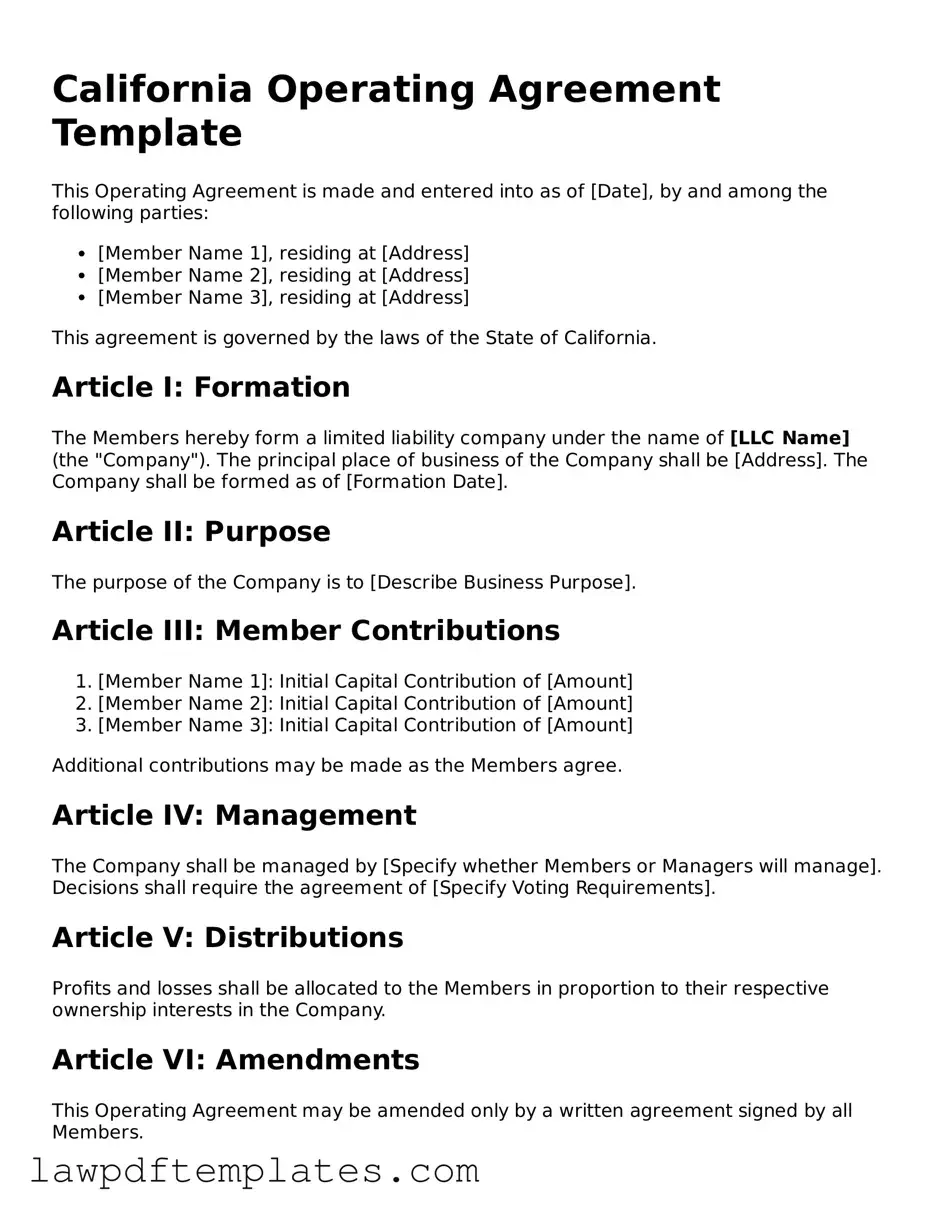California Operating Agreement Template
This Operating Agreement is made and entered into as of [Date], by and among the following parties:
- [Member Name 1], residing at [Address]
- [Member Name 2], residing at [Address]
- [Member Name 3], residing at [Address]
This agreement is governed by the laws of the State of California.
Article I: Formation
The Members hereby form a limited liability company under the name of [LLC Name] (the "Company"). The principal place of business of the Company shall be [Address]. The Company shall be formed as of [Formation Date].
Article II: Purpose
The purpose of the Company is to [Describe Business Purpose].
Article III: Member Contributions
- [Member Name 1]: Initial Capital Contribution of [Amount]
- [Member Name 2]: Initial Capital Contribution of [Amount]
- [Member Name 3]: Initial Capital Contribution of [Amount]
Additional contributions may be made as the Members agree.
Article IV: Management
The Company shall be managed by [Specify whether Members or Managers will manage]. Decisions shall require the agreement of [Specify Voting Requirements].
Article V: Distributions
Profits and losses shall be allocated to the Members in proportion to their respective ownership interests in the Company.
Article VI: Amendments
This Operating Agreement may be amended only by a written agreement signed by all Members.
Article VII: Indemnification
The Company shall indemnify any Member or Manager for any losses incurred in connection with the Company, except in cases of gross negligence or willful misconduct.
Article VIII: Miscellaneous
This Agreement constitutes the entire agreement among the Members. It supersedes any prior agreements or understandings. If any provision of this Agreement is found to be invalid or unenforceable, the remaining provisions shall continue in full force and effect.
IN WITNESS WHEREOF, the undersigned have executed this California Operating Agreement as of the date first above written.
- _____________________________ (Signature of Member 1)
- _____________________________ (Signature of Member 2)
- _____________________________ (Signature of Member 3)
